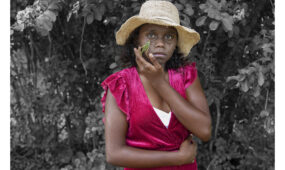Consultation process begins for new Aboriginal art and culture gallery
InReview
The State Government has begun consulting with South Australian Aboriginal communities and cultural institutions to inform the design of its mooted National Gallery for Aboriginal Art and Cultures at the old Royal Adelaide Hospital site.

Premier Steven Marshall spruiked his vision for a national Aboriginal art gallery at the old RAH site – now known as Lot 14 – ahead of last year’s state election, at the time saying the absence of a national Indigenous gallery was a “significant omission by Australian governments and a fantastic opportunity for South Australia”.
He today announced a $200,000 scoping study, flagged in last year’s budget, had begun to inform the “visions and key recommendations” of the gallery, including its size and connection with Indigenous communities.
The study, to be undertaken by consultancy firm PWC, will involve the South Australian Museum, the Art Gallery of South Australia, the State Library, Tandanya National Aboriginal Cultural Institute and South Australia’s Aboriginal communities.
Marshall said the Government had already begun preliminary discussions with stakeholders, with the scoping study to further refine the size and scope of the proposed $60 million gallery.
“At the end of this, we will have a clear vision of the scope and size of the project, and how we as a government can best collaborate with the Indigenous community after the completion of the gallery to ensure its ongoing success,” he said.
“This gallery will be the first of its kind in Australia and will allow us to properly recognise and celebrate the oldest living cultural gallery, which will attract both national and international attention.”
Tandanya CEO Dennis Stokes told InDaily he had already had informal “positive” discussions with Marshall about the gallery, with a formal meeting scheduled for the imminent future.
He said he was eager to determine the extent to which Indigenous people would be involved in the running and management of the new gallery.
“We need to be in control of how our culture is perceived and how it is portrayed,” he said.
“I’m not sure what the actual content of the gallery would be and we would definitely have to have an input into that and ensure that across the board Indigenous people have a say.”
Stokes said he was not concerned the gallery would impact on Tandanya’s operations, rather, he said the gallery would likely “work hand-in-hand” with Tandanya to promote Indigenous culture.
“We are not a gallery per se – we are more looking at programs and events that involve the community and so I think we would work more hand-in-hand with the gallery.
“I think we have to be welcoming of it because times are changing in the art world and I think this is going to have a positive role in the arts.”
The Government study is expected to be finalised by the end of July, with the gallery’s construction anticipated to begin in 2020-21 and be completed by 2022.

Get InReview in your inbox – free each Saturday. Local arts and culture – covered.
Thanks for signing up to the InReview newsletter.
Once completed, the State Government anticipates the gallery would provide employment opportunities for Aboriginal people and would partner with other research and arts institutions to become a teaching hub for Aboriginal culture, language and history.
The Northern Territory Government has also allocated $50 million in initial funding to build what it calls an “iconic National Aboriginal Art Gallery” in Alice Springs, which would be linked to a sister National Aboriginal Cultural Centre.
Support local arts journalism
Your support will help us continue the important work of InReview in publishing free professional journalism that celebrates, interrogates and amplifies arts and culture in South Australia.
Donate Here





Comments
Show comments Hide comments